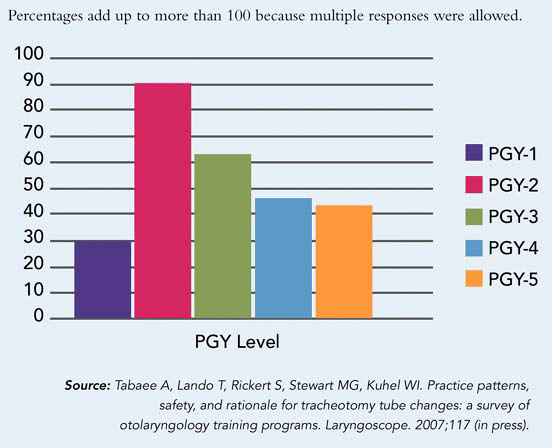Variables
There are no standardized guidelines on making trach tube changes, according to Michael G. Stewart, MD, MPH, Professor and Chairman of the Department of Otorhinolaryngology at Weill Medical College, and another author of the study. In a way, he speculates, that would be like having standards for removing stitches. That is considered the art of medicine and the practitioner will make that decision based on a number of criteria, including whether the tube should be changed at all, when it should be changed, how frequently it should be changed, and any special techniques or precautions that should be taken.
Explore This Issue
June 2007Christine G. Gourin, MD, Associate Professor of Otolaryngology at the Medical College of Georgia (MCG) in Augusta, agrees that the issue has been traditionally considered more of an art. In her institution there are generally three things that residents are taught that they need: good lighting, suction equipment, and a stable patient.
As for timing of the first tube change, I was trained with the classic dictum that the trach should not be changed before postoperative day number 5, she says. In general, she says, by day 5 there is a well formed tract, but still, there’s no magic to five days. There is also variability on the postgraduate year in which residents do their first tube change (Fig. 1).

The variability regarding trach tube changes means that physicians have to consider the overall patient situation. For instance, we see more and more morbidly obese patients as the population expands in girth, says Dr. Gourin. There’s a greater depth of soft tissue between the skin and the trachea and those are patients in whom a trach change could be difficult and even dangerous. Dr. Gourin, who is also Chief of the Division of Head and Neck Surgery at MCG, says that in her practice, stay sutures are placed around the trachea rings above and below to provide an extra measure of safety, but this was one factor that the Weill Cornell study showed varies from institution to institution.
We really do treat trach changes in many ways as an individual choice that the physician makes based on the patient and what happened with the case and so on, says Dr. Stewart, who is also Otorhinolaryngologist-in-Chief at New York Presbyterian Hospital-Weill Cornell Medical Center. From one hospital to the next, different providers make changes, in different settings, and with different equipment and circumstances. People are doing it very differently, he says, and in fact, it’s not an innocuous thing, it’s not like taking stitches out. Things that can happen during trach changes mean that we should take it potentially more seriously, like a procedure. But these investigators have begun to ask questions in terms of an evidence base, looking at, first, the extent of variation in practice, and next, whether this is an issue that otolaryngology-head and neck surgery should look at more systematically.
Leave a Reply